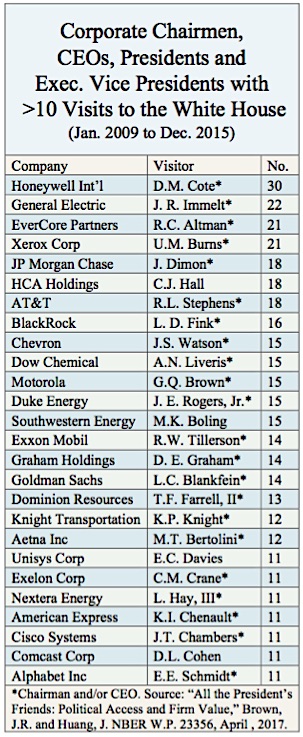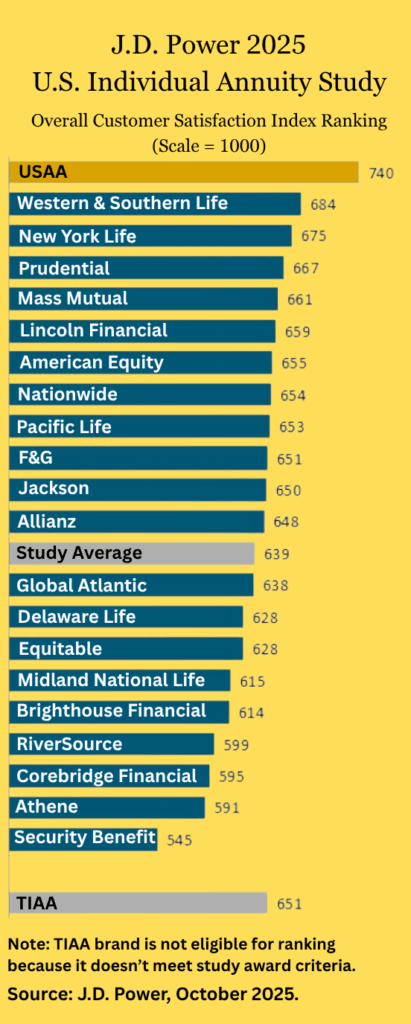Jackson aims ‘Cha-Ching’ financial education program at future policyholders
Jackson National, the top seller of variable annuities in the U.S., has launched the Jackson Charitable Foundation, a nonprofit with immediate plans to roll out “Cha-Ching Money Smart Kids,” a financial education program designed to help children become financially empowered adults.
The Foundation, operating as a 501(c)(3), will support educational programs designed to improve the ways Americans manage their money, a Jackson release said. Its board chair will be Barry Stowe, chairman and CEO of the North American Business Unit of Prudential plc, Jackson’s parent.
The Jackson Charitable Foundation’s first initiative is the U.S. rollout of Cha-Ching Money Smart Kids, a program that teaches basic money concepts to kids ages 7-12 through a series of three-minute music videos portraying relatable animated characters making real-world decisions about money.
Cha-Ching was developed and launched in Asia in 2011 in partnership with Cartoon Network Asia and Dr. Alice Wilder, the children’s education expert. It was developed under Stowe when he was CEO of Prudential Corporation Asia (PCA), the Asian operations of Prudential plc.
Cha-Ching currently broadcasts across Asia through Cartoon Network in Hong Kong, Malaysia, Singapore, Philippines, Indonesia, Thailand, Vietnam, and Taiwan, and through free-to-air TV in Cambodia and Myanmar, reaching 34 million households every day. More than 250,000 children in Asia have participated in the classroom version of Cha-Ching Money Smart Kids at schools.
To distribute Cha-Ching to U.S. children and families, the Foundation is investing nearly $3 million and formed partnerships with Discovery Education and Junior Achievement USA.
Discovery Education, the leading provider of digital content and professional development for K-12 classrooms, serving 4.5 million educators and over 50 million students, is beginning an engaging three-year financial literacy program based on Cha-Ching Money Smart Kids for elementary school classrooms nationwide. The partnership includes no-cost classroom and family activities, educator guides, family activities, a sweepstakes, a broad-based public service awareness (PSA) campaign on the Discovery Family network along with Cha-Ching animated videos, and more. These resources will be available at www.cha-chingUSA.org.
Through a six-year grant from the Jackson Charitable Foundation, Junior Achievement USA (JA) is integrating Cha-Ching Money Smart Kids videos and lessons into its “JA Our City” classroom program, taught to third-grade students by community volunteers. The program is predicted to reach 2.7 million students in 15,000 U.S. schools.
‘Income for Life Model’ now available to LIMRA members
Wealth2k’s The Income for Life Model 2017, a retirement income solutions platform from Boston-area firm, Wealth2k, will be available to LIMRA members in variations that may include co-branded and white label versions, according to a recent release.
Hundreds of LIMRA members, including insurers, broker-dealers and asset managers, will be able to use IFLM at a reduced price, Macchia told RIJ this week. As broker-dealers try to standardize their producers’ approaches retirement income planning, in part for compliance reasons, having a common system like IFLM will be increasingly important, he said.
“LIMRA members have a huge stake in retirement income,” said Kenneth Cochrane, vice president of Commercial Research at LIMRA, in the release. “In partnering with Wealth2k, our objective is to help our members capitalize on this multi-trillion-dollar opportunity in a manner that institutionalizes the member’s approach to the retirement income market.”
IFLM uses a multi-bucket approach to retirement income planning, with specific assets, including annuities, dedicated to generating income in discrete periods during retirement. The process often calls for reserving the riskiest assets for buckets that won’t be tapped for ten or twenty years, and safe assets for near-term income needs.
The solution features a digital education component, HumanRobo, “that delivers compliant education on retirement income planning,” the release said. It “helps consumers understand the importance of managing key financial risks in retirement while also providing insights on the utility of various product types in an income strategy.”
“In the post-DOL environment, all product recommendations must be secondary to a process that assigns a context and a purpose to each product recommendation. The LIMRA Wealth2k partnership will make it easy for LIMRA members to quickly and easily introduce a process for retirement income that fulfills this need,” said David Macchia, CEO of Wealth2k.
The Department of Labor’s fiduciary rule will create demand for solutions like IFLM, Macchia said, giving advisors a tool for scaling their services at a time of fee compression and for making their recommendations transparent at a time of rising standards of conduct.
The “DOL [fiduciary rule] didn’t arrive in a vacuum,” he said. “It was published at a moment when fintech was rapidly advancing. Where DOL and fintech merge, commoditization of advice, of products, and of advisors themselves is ignited. Executing properly on retirement income can be a winning strategy for LIMRA members to mitigate the worst effects of commoditization.”
Debt is a source of anxiety and stress for many: Northwestern Mutual
Nearly three quarters of Americans struggle with debt and their burden is significant in terms of both size and duration, according to Northwestern Mutual’s 2017 Planning & Progress Study.
Given the fact that the median household income in the U.S. is around $50,000, that most people couldn’t lay their hands on $2,000 easily, and that Americans have about $4 trillion in non-mortgage consumer debt, according to NerdWallet, that number isn’t surprising.
The latest Northwestern Mutual survey of about 2,000 Americans ages 18 and older showed:
- 47% of Americans owe at least $25,000, with average debt of $37,000, excluding mortgage payments.
- Among those with debt, 45% spend up to half of their monthly income on debt repayment.
- More than 10% say their debt exceeds $100,000.
- 36% of those surveyed said they will be in debt for between 6 and 20 years
- 14% expect to be in debt for the rest of their lives
- Mortgages (29%), credit card bills (19%), and personal educational loans (7% for general population/23% for Millennials) were the most common sources of debt.
The research released today is part of the 2017 Northwestern Mutual’s Planning & Progress Study annual research project exploring Americans’ attitudes and behaviors toward finances and planning. The Study launched earlier this month with a look at the current state of financial optimism.
Four in 10 Americans said debt has a “substantial” or “moderate” impact on financial security and the same number consider debt a “high” or “moderate” source of anxiety.
When asked what would help their financial situations the most, 26% of those surveyed said, “Eliminating all debt” and 29% said, “Earning significantly more money.”
When asked how they would use a $2000 windfall, 40% said they would pay down debt.
Americans said they spend 40% of their monthly income (after paying for necessities) on entertainment, leisure travel, hobbies, and more. One in four Americans surveyed said that “excessive/frivolous” spending was the financial pitfall to which they are most prone. Those managing debt said they used the following payment strategies:
- “I pay as much as I can on each of my debts each month” (35%)
- “I pay off debts with the highest interest first and make minimum payments to others” (19%)
- “I pay what I can when I can” (18% of general population/25% of Millennials)
- “I make minimum monthly payments to each creditor” (17%)
Harris Poll conducted the 2017 Planning & Progress Study for Northwestern Mutual. The poll included 2,117 American adults aged 18 or older (2,117 interviews with U.S. adults age 18+ in the General Population and an oversample of 632 interviews with U.S. Millennials age 18-34) who participated in an online survey between February 14 and February 22, 2017.
At Transamerica, your voice can be your password
Transamerica has launched Transamerica Voice Pass, a technology developed with Nuance Communications, Inc., that “leverages voice biometrics technology within a natural language understanding system” in order to increase security in call center operations.
“Customers calling Transamerica’s customer care service centers will be able to more easily and securely authenticate and access their accounts while also identifying the reason for their call, simply by speaking,” according to a Transamerica release this week.
Transamerica claims to be the first U.S. company to use the unique sound of the customer’s voice for authentication. Customers who adopt this service option can securely access their accounts merely by speaking the phrase, “At Transamerica, my voice is my password.” No additional passwords, PINs, security questions or subsequent calls are required.
Voice Pass matches each caller’s voice with his or her unique voiceprint on file. The voiceprints contain 100 physical and behavioral voice characteristics. to identify and verify an individual by their unique voiceprint. While effective in reducing acts of fraud, Voice biometrics reduces acts of fraud and authenticates 80% faster than PINs, passwords and security questions.
XY Planning Network to partner with FMeX
XY Planning Network (XYPN) said its 400 member firms will receive one year of complimentary access to Financial Media Exchange’s advisor marketing content library, and receive a discount to the service thereafter.
Financial Media Exchange, or FMeX, provides white label content to the financial services industry for sales and client relationship development. Advisors can send FMeX’s content from a phone, desktop or tablet to clients via email, LinkedIn, Facebook, Twitter, websites, blogs or daily newsletters.
XY Planning Network, with over 400 advisors, is a turnkey financial planning platform for fee-only financial advisors serving their Gen X and Gen Y peers. XYPN provides its members with compliance support services, marketing support, business tools and templates, and a wide range of technology solutions.
© 2017 RIJ Publishing LLC. All rights reserved.











